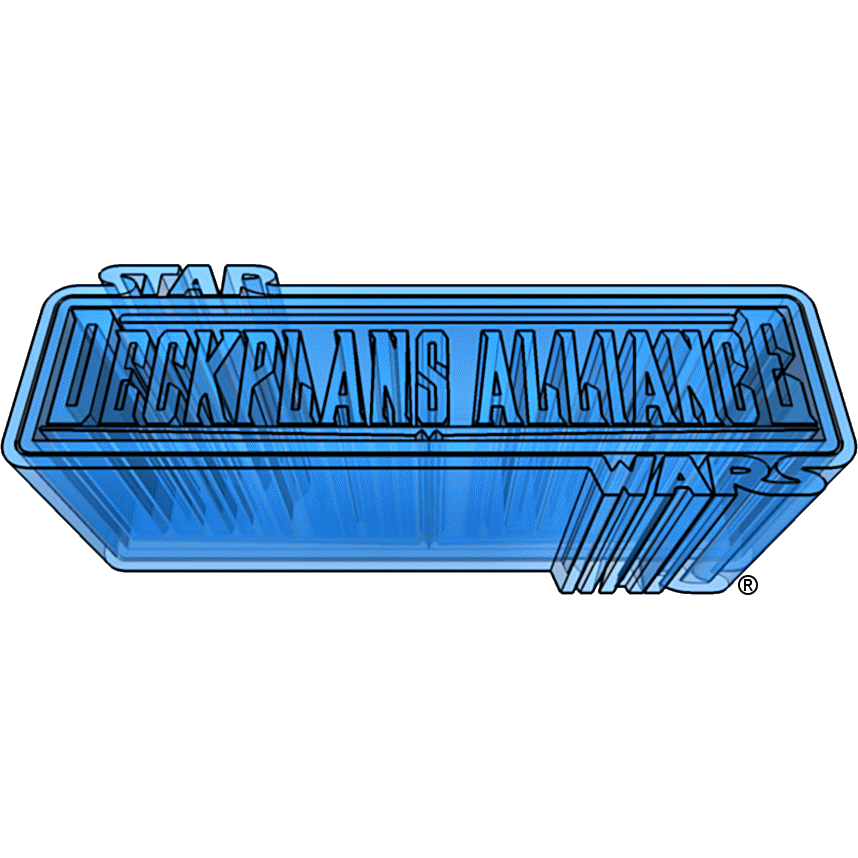
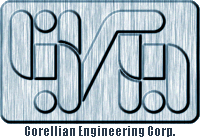
A joint-effort space transport project developed by John Royce, Frank V Bonura, and "B.M.K.", with additional help from Ed Obarowski, “Quint”, and Ben Flood-Paddock. We would also like to extend thanks to West End Games® artist Mike Vilardi for answering questions about the official published artwork of the Lady Sunfire. The Exterior of the ship is mainly based on the drawings, of Tim Eldred from, “The Last Command Sourcebook” and “The Thrawn Trilogy Sourcebook”, both published by West End Games®. Additional influences were used from the artwork of Christina Wald from the "Lords of the Expanse” Boxed Set, and “Stock Ships”, published by West End Games®.

Capsule: The Barloz-class medium freighter was once the hot ship of the spaceways, the YT-1300 of its era. That long ago, a medium freighter was equivalent to the light freighter of our era. Long since supplanted by the YT series, modified Barloz freighters continue to compete against their descendants in the Outer Rim.
— “Star Wars® - Pirates & Privateers”, p. 65
Barloz-class Medium Freighter
The Barloz-class medium freighter was once one of the most popular vessels to travel the spaceways – the YT-1300 or Ghtroc of its era. In the latter days of the Old Republic, a medium freighter was equivalent to the light freighter of the Imperial era. Long since supplanted by the YT series, modified Barlozs continue to compete against its descendants in the Outer Rim Territories. The Barloz was developed roughly three decades before the Corellian Engineering Corporation unveiled the YT-series craft. Several of the "design innovations" touted by CEC pitchmen were in fact introduced aboard the older Barloz. However, CEC's aggressive marketing campaign for the YT-series spelled the end of the venerable Barloz.
One of the principal strengths of the Barloz-class freighter is its size: 41 meters long, 10.37 meters high (11.64 meters high when empty with landing gear extended)a and capable of storing over 100 metric tons of cargo.b The size, coupled with the craft's durability, made it an ideal craft for cargo shippers...and smugglers. Barloz freighters are woefully under-armed, however (which is unusual given the amount of piracy that occurs in the Corellian sector, the home system of the Barloz's designers). A single turreted laser cannon,c is the craft's primary defense system. In addition, the Barloz is not very maneuverable, making its only option in a fight a hasty retreat. Still, the craft has a thick, durable hull capable of resisting a fair amount of damage, allowing captains to pilot their craft out of a combat zone relatively unscathed.
The Barloz was equipped with a CEC NovaQuad-D Drive System, the precursor to the engines used in the YT-series craft. Like the YT-series, most pilots modified the existing system to coax better performance from the ship.
— “Star Wars® - Stock Ships”, p. 53
Barloz Medium Freighter
— “Star Wars® - Pirates & Privateers”, p. 65,
- Craft: Corellian Engineering Corporation Barloz-class Freighter, Model: HT-8201
- Type: Medium Freighter
- Scale: Starfighter
- Length: 41 meters
- Crew Skill: Space transports: Barloz freighterd
- Crew: 2, skeleton: 1/+5
- Crew Skill: Varies widelye
- Passengers: 4
- Cargo Capacity: 120 metric tonsb
- Consumables: 2 months
- Cost: 70,000 (new)2, 17,500 (used)
- Hyperdrive Multiplier: x2
- Hyperdrive Backup: x12
- Nav Computer: Yes
- Maneuverability: 1D
- Space: 5
- Atmosphere: 295; 850 kmh
- Hull: 4D
- Shields: 1D
- Sensors:
- Passive: 10/0D
- Scan: 25/1D
- Search: 40/2D
- Focus: 2/2D
- Weapons:
- Laser Cannon
- Fire Arc:Turret
- Skill: Starship gunnery
- Fire Control: 1D
- Space Range: 1-3/12/25
- Atmosphere Range: 100-300/1.2/2.5 kmf
- Damage: 3D
— “Star Wars® - Stock Ships”, p. 55
20 meters high, we discovered this dimension to be incorrect with or without the landing gear extended. When proportioning the original Lady Sunfire artwork, we realized the height of the ship was about half the size of that specification. We then compared proportions of the other sources only to come to the same conclusion thus we strongly believe
20 meters highto be a typo.
Cargo Capacity: 120 metric tonsis listed as
Cargo Capacity: 85 metric tonsin “Star Wars® - Pirates & Privateers” on page 65. The 85 metric ton stat is believed to be a typo due to the cargo capacity, and extensive modifications of the Lady Sunfire on pages 234-235 of the “Thrawn Trilogy Sourcebook” , and pages 135-136 of the “The Last Command Sourcebook” . The stock cargo capacity of 120 metric tons is listed in two places in “Stock Ships” , page 55, and on the Barloz color card (reverse side) in the back of the book.
A single laser cannon, fixed in a front-firing position, is the craft's primary defense system. We strongly believe this statement is a typo. The stats in “Star Wars® - Pirates & Privateers” page 65, in “Stock Ships” page 55, and on “Stock Ships” Barloz color card (reverse side), all indicate the Stock laser cannon is turreted, and not fixed in a front-firing position.
Skill: Space transports: Barloz freighteris listed incorrectly on page 55 of “Stock Ships” as
Skill: Space transports.
Crew Skill: Varies widelyis missing from the stats in “Stock Ships” on page 55. It only appears in “Star Wars® - Pirates & Privateers” on page 65.
Atmosphere Range: 100-300/1.2/2.5 kmis listed incorrectly as
Atmosphere Range: 100-300/1.2/2.5, in “Stock Ships” on page 55.

Unless otherwise noted, this deck has a maximum ceiling height of 2.29 meters (7ft 6in). Descriptions of the lower deck's various rooms and compartments are listed below.
This area houses the ship's entry ramp and forward airlock. This airlock is fully functional and can be used for space walks. The entry ramp is strong enough to support 1 metric tons and has a clearance of 1.52 meters (5ft) wide by 2.19 meters (7ft 2in) high.
This area houses one of the five landing gear assemblies of the ship and one of the ship's repulsor-lift emitters. The pressure maintenance hatch in this compartment is space rated in the event of a hull breach or if the landing struts are extended in a vacuum.
This area houses one of the five landing gear assemblies of the ship and one of the ship's repulsor-lift emitters. The pressure maintenance hatch in this compartment is space rated in the event of a hull breach or if the landing struts are extended in a vacuum.
This area can hold up to 200 cubic meters of cargo and has a ceiling height of 2.29 meters (7ft-6in). The hold can store slender objects up to 15 meters (49ft 2 in) long, if loaded from the front ramp, and can load containers of a maximum size of 2.44 meters (7ft 6in) wide, by 4.98 meters (16ft 4in) long, by 2.24 meters (7ft 4in) high, if loaded from the cargo lift.
This area houses optional accessory modules. On this model an escape pod is installed in the lower arm. The ship's port turbolift system passes through this area and provides access to Deck 1 via the cargo hold.
This area houses optional accessory modules. On this model an escape pod is installed in the lower arm. The ship's starboard turbolift system passes through this area and provides access to Deck 1 via the cargo hold.
This area houses one of the five landing gear assemblies of the ship and one of the ship's repulsor-lift emitters. The pressure maintenance hatch in this compartment is space rated in the event of a hull breach or if the landing struts are extended in a vacuum.
This area Stores some of the ship's consumables and provides access to the port aft landing gear compartment.
This corridor provides access to the various rear engineering sections of deck 1 for service and maintenance.
This area houses the ships main cargo lift. The lift's shaft way is double sealed and can serve as a fully functioning airlock for space walks or pickup and delivery in a vacuum. The lift uses a repulsor track system and can seal off the upper and lower deck via central pressure doors.
This corridor provides access to the various rear engineering sections of deck 1 for service and maintenance.
This area Stores some of the ship's consumables and provides access to the starboard aft landing gear compartment.
This area houses one of the five landing gear assemblies of the ship and one of the ship's repulsor-lift emitters. The pressure maintenance hatch in this compartment is space rated in the event of a hull breach or if the landing struts are extended in a vacuum.
This area houses one of the five landing gear assemblies of the ship. The pressure maintenance hatch in this compartment is space rated in the event of a hull breach or if the landing struts are extended in a vacuum.
This area holds two of the ship's repulsor-lift emitters as well as some of the ships consumables. This room provides access to the ships lower fuel compartment in the aft and provides access to the underside of the ship's power core reactor for service and maintenance.
This area holds three of the ship's fuel transfer tanks (High Pressure) and provides access to the underside of the ship's power core reactor for service and maintenance.

Unless otherwise noted, this deck has a maximum ceiling height of 2.49 meters (8ft 2in). Descriptions of the middle deck's various rooms and compartments are listed below.
This is the main command center of the ship from which all system functions onboard can be monitored and Controled.
The CEC equatorial trench system provides a double barrier of protection for cargo and crew defining primary and secondary hull zones around the perimeter of the ship. Redundant low priority systems are installed here to provide continuous operation in the event of a collision or weapon impact damage. This area can only be serviced externally.
This area can be used for storage or the installation of dealer/customer specific equipment. Corellian Engineering Corporation recommends that no permanent furniture or fixtures be installed within one meter of the forward service cover to facilitate service/maintenance of the repulsor emitter.
This area was designated by CEC for use as the Captain's quarters but can be used for any member of the crew or for a single passenger. This room is equipped with premium security locks on the outer door, the closet, and one of the armored cabinets under the bed.
This area was designated by CEC for use as the First Mate's quarters but can be used for any member of the crew or for a single passenger. This room is equipped with standard security locks on the outer door, the closet, and one of the armored cabinets under the bed.
This area can be used for storage or the installation of dealer/customer specific equipment. Corellian Engineering Corporation recommends that no permanent furniture or fixtures be installed within one meter of the forward service cover to facilitate service/maintenance of the repulsor emitter.
This area is used primarily by passengers allowing access to the common room, port storage room, port head (bathroom), and the port turbolift landing.
This area connects the crew corridor and passenger corridors. The two pressure doors to this area can be locked to provide additional privacy and/or security for the crew.
This area is used primarily by passengers allowing access to the transverse corridor, Starboard storage room, Starboard head (bathroom) and the Starboard turbolift landing.
This area was designed to service up to five medium (human-sized) beings. Large and small alien races may require special optional facilities provided by the dealer or owner for an additional charge. Consult your local CEC Dealership for more details.
This area was designed to provide sleeping quarters for up to two medium (human-sized) beings. Larger alien races will be required to sleep on the floor.
Warning: Serious injury and death can occur if this area is blocked, modified, and/or used for storage of cargo. Corellian Engineering Corp. will not assume responsibility for loss of life due to escape pod obstruction. This area should be kept clear and cleaned of any liquids or chemical agents that can reduce traction on the deck or the grips of hand holds in this area.
This area houses optional accessory modules. On this model an escape pod is installed below in the lower arm and a viewport blank-out is installed above in the upper arm. The ship's port turbolift system passes through this area and provides access to Deck 2 via the cargo hold or the landing.
This area was designed to service up to five medium (human-sized) beings. Large and small alien races may require special optional facilities provided by the dealer or owner for an additional charge. Consult your local CEC Dealership for more details.
This area was designed to provide sleeping quarters for up to two medium (human-sized) beings. Larger alien races will be required to sleep on the floor.
Warning: Serious injury and death can occur if this area is blocked, modified, and/or used for storage of cargo. Corellian Engineering Corp. will not assume responsibility for loss of life due to escape pod obstruction. This area should be kept clear and cleaned of any liquids or chemical agents that can reduce traction on the deck or the grips of hand holds in this area.
This area houses optional accessory modules. On this model an escape pod is installed below in the lower arm and a viewport blank-out is installed above in the upper arm. The ship's port turbolift system passes through this area and provides access to Deck 2 via the cargo hold or the landing.
The CEC equatorial trench system provides a double barrier of protection for cargo and crew defining primary and secondary hull zones around the perimeter of the ship. Redundant low priority systems are installed here to provide continuous operation in the event of a collision or weapon impact damage. This area can only be serviced externally.
This area houses optional accessory modules. On this model a telescopic airlock is installed for use in docking with other ships or for light-duty transverse hauling missions. The airlock is triple sealed and has universal couplings with magnetic shielded seals for attachment to the majority of known docking systems. The airlock is suitable for space walks or ship-to-ship cargo and personnel transfers.
This area can hold up to 582 cubic meters of cargo and has a maximum ceiling height of 2.49 meters (8ft 2in). The hold can store slender objects up to 8.59 meters (56ft 2 in) long, if loaded from the port or starboard docking arms, and can load containers of a maximum size of 2.44 meters (7ft 6in) wide, by 4.98 meters (16ft 4in) long, by 2.24 meters (7ft 4in) high, if loaded from the cargo lift.
This area houses the ships main cargo lift. The lift's shaft way is double sealed and can serve as a fully functioning airlock for space walks or pickup and delivery in a vacuum. The lift uses a repulsor track system and can seal off the upper and lower deck via central pressure doors.
This area houses optional accessory modules. On this model a telescopic airlock is installed for use in docking with other ships or for light-duty transverse hauling missions. The airlock is triple sealed and has universal couplings with magnetic shielded seals for attachment to the majority of known docking systems. The airlock is suitable for space walks or ship-to-ship cargo and personnel transfers.
The CEC equatorial trench system provides a double barrier of protection for cargo and crew defining primary and secondary hull zones around the perimeter of the ship. Redundant low priority systems are installed here to provide continuous operation in the event of a collision or weapon impact damage. This area can only be serviced externally.
This area houses the ships reactor and sublight drives. Power is distributed to the entire ship from this Location. The ships hyperdrives are mounted atop the power core and are directly powered by it. The main reactor was designed to provide approximately 20 percent surplus power for upgrades and modifications.
The CEC equatorial trench system provides a double barrier of protection for cargo and crew defining primary and secondary hull zones around the perimeter of the ship. Redundant low priority systems are installed here to provide continuous operation in the event of a collision or weapon impact damage. This area can only be serviced externally.
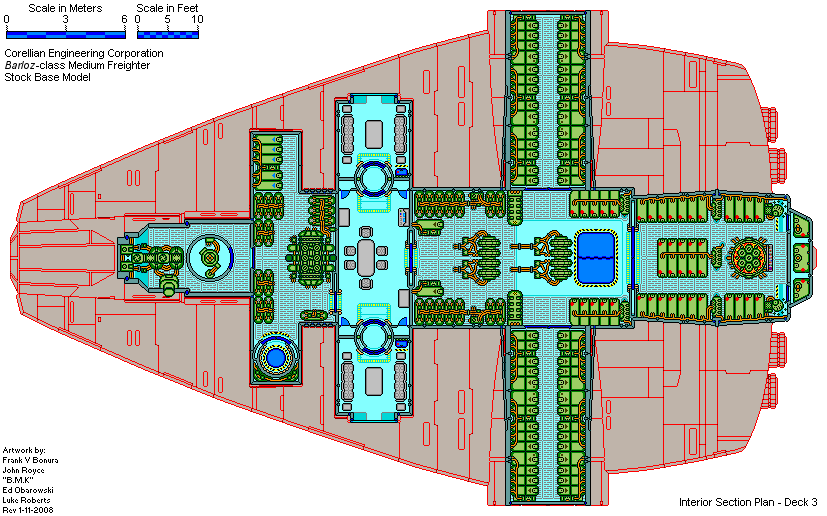
Unless otherwise noted, this deck has a maximum ceiling height of 2.59 meters (8ft 6in). Descriptions of the upper deck's various rooms and compartments are listed below.
Housing the ships focus array and the transport's ship-to-ship comlink (commo net), this crawlspace has a maximum headroom of 91cm (3ft 0in) and is best accessed by small maintenance droids for service/maintenance.
Housing the ship's weapon systems, this cylindrical compartment extends up into the ship's laser cannon for service/maintenance. The stock laser cannon itself is furnished by Taim & Bak Corporation (Model: DX3). Intentionally left spacious, this compartment can house more powerful weapon systems than the stock laser cannon.
This area is empty to allow room for additional optional equipment and/or custom equipment installed by the dealer or owner. Allowing access forward to the sensor suite, this area has a maximum headroom of 1.07 meters (3ft 6in) and is best accessed by small maintenance droids for service/maintenance.
Providing access to the top of the ship, this lift is rated to safely lift 400kg. With a maximum ceiling height of 1.78 meters (5ft 10in), this area requires taller human sized individuals to crouch and is better accessed by droids for service/maintenance. This airlock is triple sealed and is suitable for space walks and exterior repairs.
Filled with atmospheric storage tanks and the main atmospheric processor, this compartment manages the air quality, temperature, and pressure aboard the ship. With a maximum ceiling height of 1.78 meters (5ft 10in), most of this area requires human sized individuals to crouch and is better accessed by small maintenance droids for service/maintenance.
This area houses optional accessory modules. On this model an observation lounge is installed in the upper arm. Insulated against the various sounds and traffic of the rest of the ship, the lounge provides a good vantage point both in flight and when the ship is resting on the ground. The ship's port turbolift system passes through this area and provides access to Deck 3 via the common room. This area can only be entered and exited via the turbolift or the emergency hatch in the floor. All furniture in this area is equipped with magnetic clamps so they can be moved and re secured to the deck in any configuration the customer desires (factory configuration shown).
Serving as the hub of the ship during long hyperspace trips this area is designed to accommodate all members of the crew and passengers at the same time. The table and chairs are equipped with magnetic clamps so they can be moved and re secured to the deck in any configuration the customer desires (factory configuration shown).
This area houses optional accessory modules. On this model an observation lounge is installed in the upper arm. Insulated against the various sounds and traffic of the rest of the ship, the lounge provides a good vantage point both in flight and when the ship is resting on the ground. The ship's port turbolift system passes through this area and provides access to Deck 3 via the common room. This area can only be entered and exited via the turbolift or the emergency hatch in the floor. All furniture in this area is equipped with magnetic clamps so they can be moved and re secured to the deck in any configuration the customer desires (factory configuration shown).
This area Stores some of the ship's consumables and has a maximum headroom of 97 cm (3ft 2in) and is best accessed by small maintenance droids for service/maintenance.
Housing the ships's defensive systems, this compartment serves as the hub for service maintenance for all ship systems on this deck. The cargo lift can be accessed from the large transfer hatch on the floor.
This area Stores some of the ship's consumables and has a maximum headroom of 97 cm (3ft 2in) and is best accessed by small maintenance droids for service/maintenance.
Housing the some of the ship's fuel stores, this area also houses the ship's main hyperdrive and some of the ship's search sensor array equipment.
This area holds three of the ship's fuel transfer tanks (High Pressure) and provides access to the topside of the ship's power core reactor for service and maintenance.

This section was designed to show how the 3 decks relate to one another. You can also see the workings of the cargo lift shaft way as it passes through decks 1 and 2.
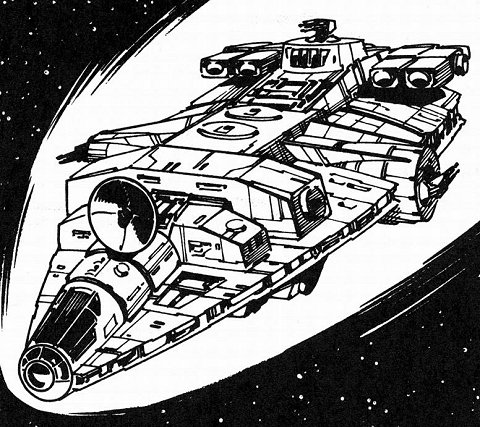
Originating from “The Last Command Sourcebook”, the Barloz-class came from a publication that was based on the novel of the same name written by Timothy Zahn. There is no mention of the Barloz-class nor the name Lady Sunfire (the first known Barloz-class) anywhere in the original novel. Owned by the smuggler Clyngunn, who is briefly mentioned in several chapters of “The Last Command”, the Lady Sunfire is never mentioned nor described in the novel. In light of the fact, several theories exist as to the true origins or the Barloz-class freighter. One theory is the ship could merely be the creation of sourcebook author Eric S. Trautmann of West End Games®. Another theory suggests that Timothy Zahn who was also credited for helping with the “The Last Command Sourcebook” may have provided some additional background material for the roleplaying game. It is also possible the Lady Sunfire and the Barloz-class were from Timothy Zahn's personal notes and although they did not make it to the pages of his novels, they did find new life and were resurrected for use in the roleplaying game.
We began this project by looking at the original and oldest known image of the Barloz-class Medium freighter drawn by Tim Eldred. This drawing is not of a stock Barloz-class but of the Lady Sunfire which is a heavily modified version of this freighter. As we converted this image from a perspective drawing to orthographic views (top, side, and front), we had to carefully consider how to remove the modified components and try to reconstruct the stock freighter underneath the layers of repairs, upgrades, and customizations.
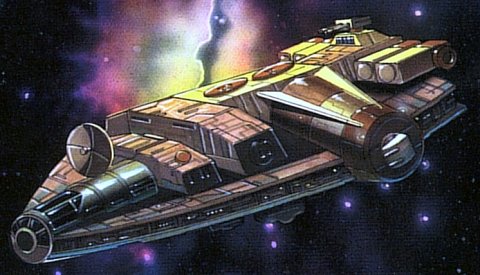
We consulted with West End Games® employee Mike Vilardi on some of the questionable elements and discovered the four box-shaped structures on the rear of the ship were concussion missile tubes and were not stock. We also realized the gunnery tower and three turreted laser cannons mounted between the missile tubes and at the ends of the Accessory arms were also added modifications so we decided to remove all these structures on our stock model.
Continuing our study, we observed the large forward parabolic sensor dish above the cockpit. Our study discovered it too was a modification and not original equipment. We decided the hardpoint on which the dish was mounted may have been originally for use as a laser cannon turret. This laser cannon turret would have been used on the stock model so we further decided to mount the smaller stock weapon system in place of the dish.
Many of the exterior panel lines were removed as they were considered repairs made due to the scars of space combat, age, and fatigue reinforcements that depicted the condition of the Lady Sunfire in the original Tim Eldred drawing. We then added a series of decorative moldings equipped with service covers capping the equatorial edges of the ship. This was done because it was decided these panels were lost, damaged, or were intentionally removed to allow for larger high-performance parts to be installed on the Lady Sunfire.
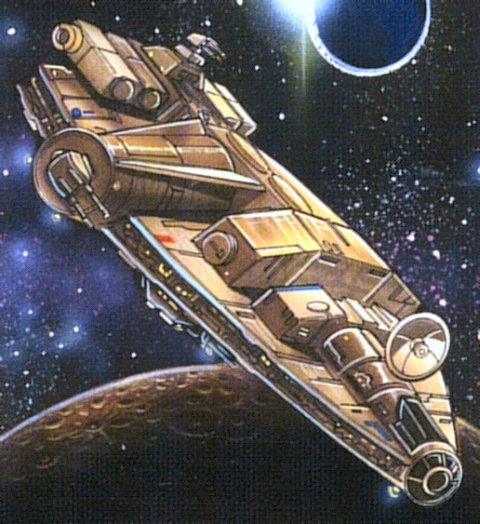
We continued our research by studying artwork of the freighter that came after the original drawing. We analyzed the two color paintings created by Christina Wald of the Barloz-class in hopes of filling in the missing pieces of this ship and learning more about the stock model. Unfortunately we discovered the color paintings looked more like the Lady Sunfire and less like the stock models they were suposed to depict.
Due to what appears to be a lack of communications, the artwork on the stock freighters in the color paintings are drawn equipped with four concussion missile tubes each and multiple turreted laser cannons even though the stock model is described as having only a single laser cannon. We also noticed both paintings have parabolic sensor dishes that the stock game stats do not make any mention of at all. Only the description of the Lady Sunfire makes any mention of this device.
We decided to ignore all the weaponry and modified equipment seen in the Christina Wald paintings but we still used the paintings for some inspiration in areas of the ship where the Tim Eldred drawing was silent. The intent of the changes to the exterior was to simulate a cleaner more streamlined appearance that a new unmodified Medium freighter would have. The result of all this work is a stock Barloz-class Medium Freighter that accurately matches the description of its stock capsule and game stats.